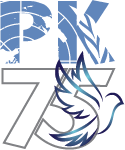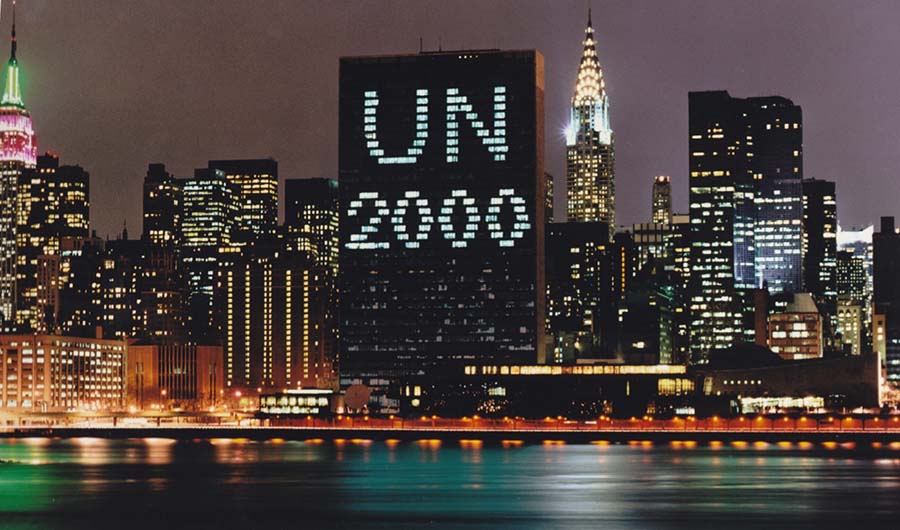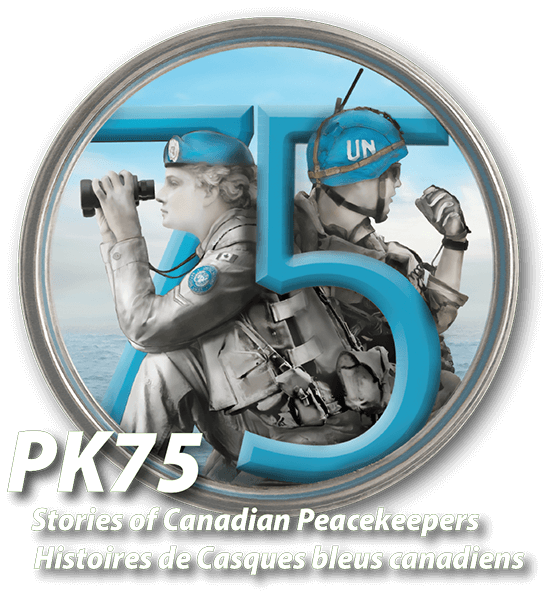

I am not a peacekeeper. I have not served on a peacekeeping mission. But peacekeeping was a key part of my life for over two decades. And all of this happened thanks to the Soviet Union. There are not many things for which I would thank the Soviet Union, but this is probably the only one.
In the summer of 1988, I was promoted to lieutenant-colonel. The plan was six months at the NATO Defence College in Rome, followed by a French course, and then an army job in the summer of 1989. But then the Soviet Union stepped in. As part of a NATO tit for tat, Canada's newly posted defence attaché in Moscow was declared persona non grata (a person who is unacceptable or unwelcome) and expelled. Long story short, he took my place in Rome and a shuffle of officers resulted in my short notice posting to the Directorate of International Policy (DIPol) in the Assistant Deputy Minister (Policy) (ADM Pol) group at National Defence Headquarters (NDHQ). Fortunately, I was already serving in Ottawa, but I really had no idea of what the Policy Group did, let alone the role of DIPol. I quickly learned that I was to be the policy focal point for all Canadian peacekeeping.
I arrived at the Directorate for my first day at work after two weeks of leave, having had about an hour of handover before I went on holidays. My Director was away and the new Director General had yet to arrive, so I spent some time with our secretary Barb getting to learn about DIPol and meeting the other members of the team. So far, so good. Then the phone rang! It was an officer from the Department of Foreign Affairs asking me what we were going to do about this telegram (being in the pre-email era) from PRMNY. I determined who he was and promised to phone him back and then panicked. The first task was to find out who or what PRMNY was and then to find that mysterious telegram. Barb became my first hero of the day as she patiently explained that PRMNY was the acronym for the Canadian Permanent Mission to the United Nations in New York. Then we found the telegram.
The United Nations, through our Military Adviser at PRMNY (who knew!) was asking Canada to contribute a small number of communications folks to support the newly mandated UN Mission Iran-Iraq Military Observer Group (UNIIMOG). With no Director or Director General (DG) in place, I clutched the telegram with sweaty hands and paraded myself in front of the Associate Assistant Deputy Minister in the Policy Group. In those days, ADM (Pol) had a two-star as the Associate. So, I introduced myself to Major-General David Huddleston, saying how delighted I was to be in the Policy Group. After some introductory chit chat, he asked me if there was anything he could do, and I screamed "Help"! And over the next two weeks, MGen Huddleston fronted for me (his term, not mine) as we put together the package that saw a significant contribution to that mission.
And from there, it was off and running for the next four years. It was a period of almost unprecedented peacekeeping activities with operations ranging from the Good Offices mission to oversee the Soviet withdrawal from Afghanistan to the independence of Namibia, to missions in Central America, and more missions in Africa including Somalia, and then the deployment into Croatia and further into the Balkans. It was an exciting time to be a policy officer and I had to develop an extensive network with the operations staff at NDHQ as well as with the international staff at Foreign Affairs and our military adviser (Milad) at PRMNY. As well, I quickly learned about the workings of the officer of the Minister of National Defence (MND) as I was frequently asked to brief the Minister or his senior policy advisers. Ministers were easy to brief; the staff was another dimension.
One of the many highlights of these four years was being tasked as the military adviser to Canada's Special Envoy for Cambodia, Ambassador Alan Sullivan. As such, I was part of the Canadian delegation to the Cambodia Peace Talks in Paris in August 1989. Talk about a learning experience! I then traveled to the region with Ambassador Sullivan and was invited to be part of the Canadian delegation at the signing ceremony in Paris in October 1991. I accompanied the Minister for Foreign Affairs, Barbara McDougall, and her team to the ceremony. There was a mix-up with cars to transport us to the signing site, so I suggested to the Minister that she and a couple of others take the car while I would round up the remainder of the gaggle and walk the few blocks to the site. We, the walkers, arrived before the Minister which triggered the French hosts into playing 'O Canada' and presenting arms. The political staffers started to panic but I said keep smiling and told them to follow me. So, up we marched to the steps of the site, saluted the French Minister of Foreign Affairs, and entered the salon where the ceremony was to be held. It was a great entrance!
After four years in the Policy Group, I was posted to the Canadian Defence Liaison Staff (CDLS) in London, England as the Assistant Army Adviser. However, because of my policy background, the Commander tasked me to handle defence policy issues including the ongoing peace operations in the Balkans. As part of this, the Army section was asked to provide a weekly update to Her Majesty Queen Elizabeth II on Canadian participation in the UN missions in the Balkans, particularly the activities of the Royal 22e Regiment, of which she was Colonel-in-Chief. These reports were very well received and began to be requested by other members of the Royal Family, especially those who served as Colonels-in-Chief. The distribution included Lady Patricia, Countess of Burma, who was serving as the Colonel-in Chief of the Princess Patricia's Canadian Light Infantry (PPCLI). After receiving one update, Lady Patricia picked up the phone and called the Regimental HQ to express her dismay that she had been informed of a Patricia's death by the Canadian High Commission and not by "her Regiment". Lady Patricia had not noticed the time difference to Canada and the Regimental officer was surprised to say the least to be awoken in the middle of the night.
All good things must come to an end and after three years in London, I had a posting order back to the Policy Group in Ottawa. A week before my wife was setting out on a house hunting trip, I was suddenly promoted and posted to PRMNY as the Canadian Military Adviser. It was a two-year posting which eventually turned into seven years in New York. And peacekeeping was at the centre of my portfolio. My staff and I worked closely with the UN Military Adviser and the staff in the Department of Peacekeeping Operations (DPKO) to coordinate Canadian military and police participation in UN Missions. We also were part of the Canadian delegation, under the direction of the Canadian Deputy Permanent Adviser (the number two at PRMNY), to the UN General Assembly's 'Special Committee on Peacekeeping Operations'. This was both a frustrating and rewarding experience but prepared me for the next milestone.
In 1998, Canada was elected to a two-year term as a Non-Permanent Member of the UN Security Council for the two years 1999-2000 and I was to be the Military Adviser to the Canadian Security Council Team. Not only did I have to advise the Ambassador and the other team members, but I had to become a translator and interpreter. In basic terms, this meant taking 'military speak' and translating it into a language that diplomats understood. It was a wonderful experience and I do wonder if Canada will ever again be elected to the Security Council. The first six years in New York passed very quickly but as Canada started to withdraw from UN peacekeeping, the events of 9/11 came into play. For most of the year following the attack on New York City, I worked with the Deputy Permanent Representative to improve safety and security for the Canadian delegation in New York. A year of that was enough and it was time to come back to Canada and to think about retirement.
However, an old friend phoned and asked me to return to the Policy Group and take over as Director of NATO Policy. Having started as a NATO soldier in the Cold War, I thought that this would be a nice way to round out my career. I remember thinking that this would be the end of my involvement with peacekeeping. Wrong! I was nicely settled into the job when the decision was made that NATO would take over the peace operations in Afghanistan under a United Nations mandate. It was a nice way to end a career tying the two threads of it together. I would also continue to be involved in peacekeeping in retirement. Over the next 10 years, I worked on and off for the Pearson Peacekeeping Centre (later the Pearson Centre) running a variety of peacekeeping programs for them. My favourite was a three-week course which I devised to introduce military officers to how the policy side of peacekeeping functioned within a UN framework. With the closure of the Pearson Centre, it was time for me to fully retire.
Little did I think that because of the Soviet Union, I would spend over 20 years not being a peacekeeper! It did turn out to be quite a gig.
Biography
Colonel Michael (Mike) Snell (Retired) joined the Canadian Army Militia in 1965 and then, in 1967, he enrolled in the Regular Officer Training Plan with the Canadian Army and was commissioned in 1972. He has served on Regimental duty in Calgary, AB, Gagetown, NB, and Germany. He is a 1980 graduate of the Advanced Armour Officers' Course at Fort Knox, Kentucky, USA and a graduate of the Canadian Forces Command and Staff College at Toronto, ON. Regimentally, he served two tours in Calgary, as well as a tour in Germany, with Princess Patricia’s Canadian Light Infantry.
On promotion to Lieutenant Colonel, he served from 1988 to 1992 in the Directorate of International Policy, NDHQ, with primary responsibility for United Nations Operations. During this period, he was the Military Adviser to the Canadian Special Envoy for Cambodia and to the Canadian delegation to the Paris Peace Conference on Cambodia. In August 1992, he was posted as the Assistant Army Adviser at the Canadian Defence Liaison Staff, London, England.
Colonel Snell was promoted to colonel on 1 July 1995, at which time he assumed the appointment as the Military Adviser at Canada's Permanent Mission to the United Nations in New York. During this time, until late 2000, he was also responsible for disarmament issues in the Canadian Delegation. He became Director NATO Policy at National Defence Headquarters in August 2002 until he retired from the Canadian Forces on 15 January 2004. He joined the Pearson Peacekeeping Centre as the Director, Defence Diplomacy Program, on 3 October 2005. On 1 April 2007, he became the Executive Director for the Conference of Defence Ministers of the Americas 2008 (CDMA 08) held in Banff, AB in September 2008. As of February 2009, Colonel Snell returned to the Pearson Centre and remained there until he retired in 2013.
Colonel Snell graduated in 1972 from McMaster University, Hamilton, ON with an Honours Bachelor of Arts Degree in Political Science. In 1973 he was awarded a Master of Arts in Political Science from Carleton University, Ottawa, ON.

While many worried about Y2K, the United Nations welcomed the new millennium.


